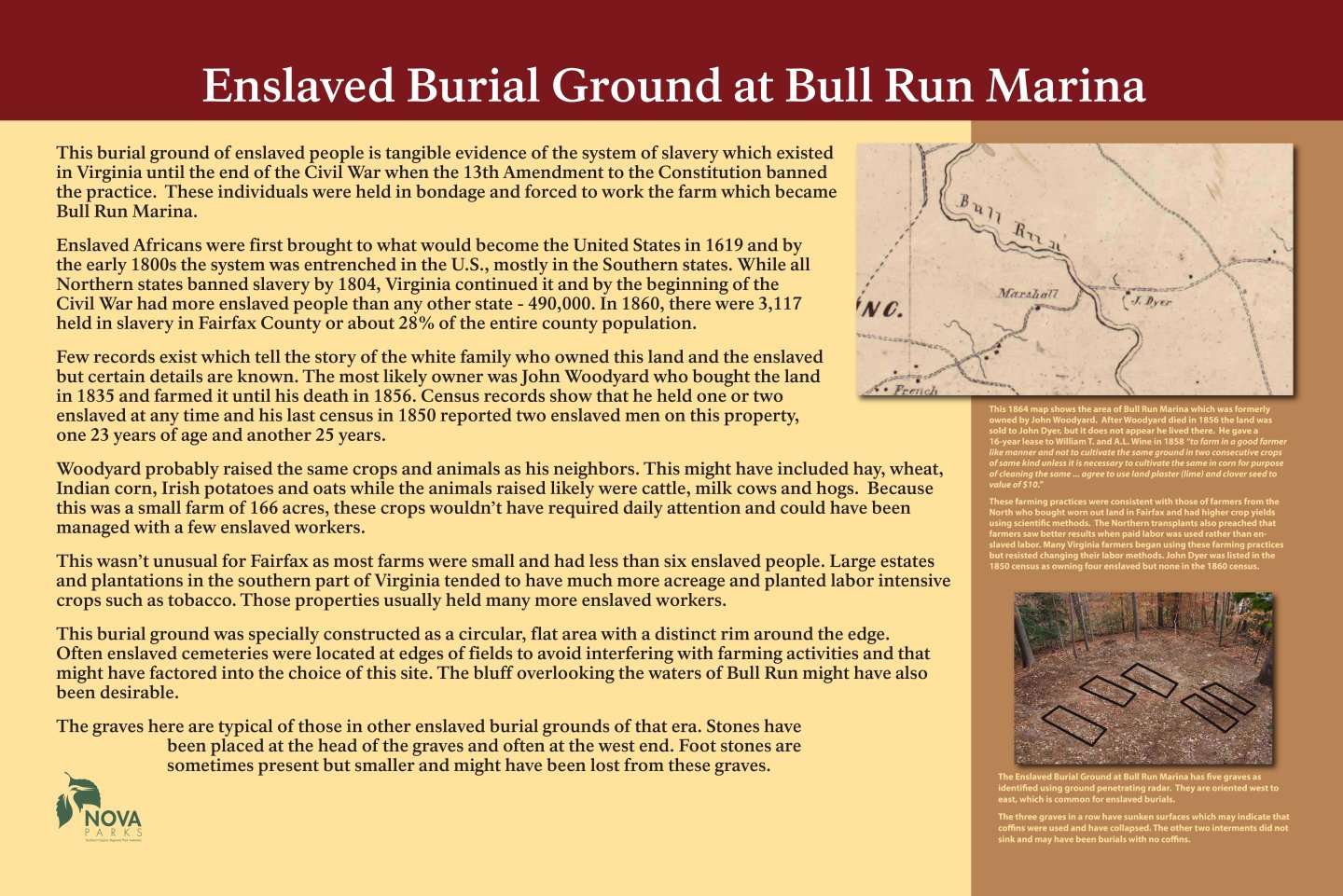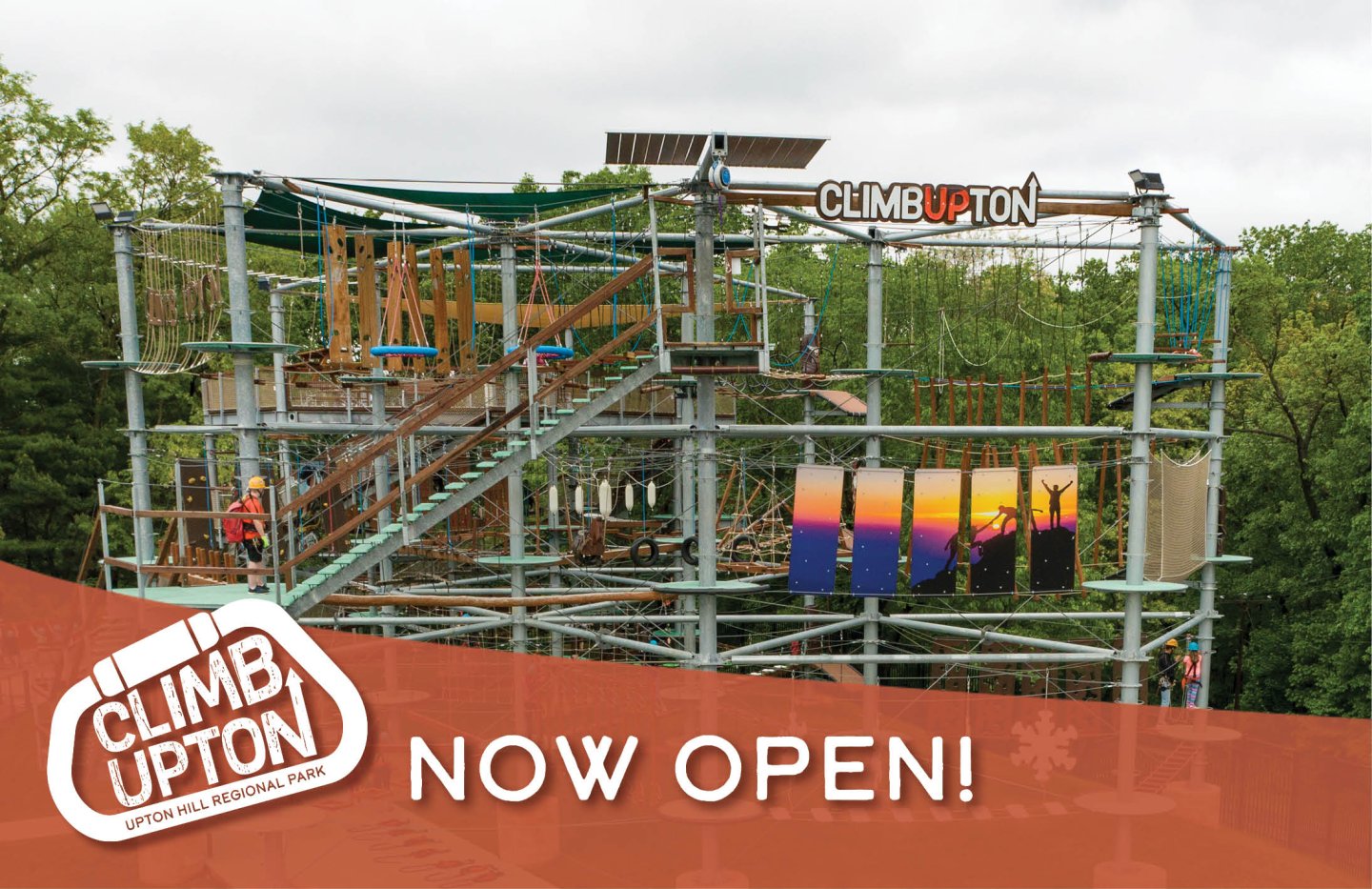Bull Run Marina
Park History Interpretive Series: Enslaved Burial Ground at Bull Run Marina

This burial ground of enslaved people is tangible evidence of the system of slavery which existed in Virginia until the end of the Civil War when the 13th Amendment to the Constitution banned the practice. These individuals were held in bondage and forced to work the farm which became Bull Run Marina.
Enslaved Africans were first brought to what would become the United States in 1619 and by the early 1800s the system was entrenched in the U.S., mostly in the Southern states. While all Northern states banned slavery by 1804, Virginia continued it and by the beginning of the Civil War had more enslaved people than any other state - 490,000. In 1860, there were 3,117 held in slavery in Fairfax County or about 28% of the entire county population.
Few records exist which tell the story of the white family who owned this land and the enslaved but certain details are known. The most likely owner was John Woodyard who bought the land in 1835 and farmed it until his death in 1856. Census records show that he held one or two enslaved at any time and his last census in 1850 reported two enslaved men on this property, one 23 years of age and another 25 years.
Woodyard probably raised the same crops and animals as his neighbors. This might have included hay, wheat, Indian corn, Irish potatoes and oats while the animals raised likely were cattle, milk cows and hogs. Because this was a small farm of 166 acres, these crops wouldn’t have required daily attention and could have been managed with a few enslaved workers.
This wasn’t unusual for Fairfax as most farms were small and had less than six enslaved people. Large estates and plantations in the southern part of Virginia tended to have much more acreage and planted labor intensive crops such as tobacco. Those properties usually held many more enslaved workers.
This burial ground was specially constructed as a circular, flat area with a distinct rim around the edge. Often enslaved cemeteries were located at edges of fields to avoid interfering with farming activities and that might have factored into the choice of this site. The bluff overlooking the waters of Bull Run might have also been desirable.
The graves here are typical of those in other enslaved burial grounds of that era. Stones have been placed at the head of the graves and often at the west end. Foot stones are sometimes present but smaller and might have been lost from these graves.


